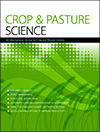Harvest weed seed control (HWSC) systems have been introduced as an alternative weed control technology for use at a novel weed control timing in grain production systems. The inclusion of HWSC in weed control programs has likely greatly contributed to lower weed densities, mitigating the impact of herbicide resistance and slowing further evolution of resistance. The successful use of HWSC by Australian grain growers has attracted global interest in developing this weed control approach for the world’s cropping systems.
CP21647 Abstract | CP21647 Full Text | CP21647PDF (1.2 MB) Open Access Article





